Whaimutu Dewes remembers the morning of 14 September 1972 well. It was raining, the weather was miserable, but there was an energy.
The air was electric, he recalled, as Dewes and dozens of other young Māori, backed by their supporters - including several prominent kuia and kaumatua - gathered out front of parliament, on what is now a lawn but was then a carpark.
Taiaha and papers in hand, they formed a neat ope and marched towards the base of the stairs. With piles and piles of papers, they and 33,000 others called for the active support and teaching of te reo Māori.
These groups of students, the Te Reo Māori Society from Wellington and Ngā Tamatoa from Auckland, had spent the past two years rallying support for a language that had until recently been actively suppressed.
"Euphoria is the wrong word," Dewes said in an interview, "[but] it was a culmination of a lot of effort by a lot of people.
"And then it was a realisation, 'oh my god, now the work really starts'."

This week marks 50 years since the Māori Language Petition was presented to Parliament, spearheaded by 22-year-old Hana Te Hemara. Photo: Ministry of Culture and Heritage (URL: https://nzhistory.govt.nz/media/photo/maori-language-petition-1972)
This week marks 50 years since the Māori Language Petition was presented to Parliament, spearheaded by 22-year-old Hana Te Hemara (also known as Hana Jackson), who called for the active recognition and teaching of te reo Māori in schools.
"Often you hear the quotation in New Zealand that we are two races but one people. I feel we are objecting to being phased out, that Māori language has a natural heritage in this country and through the language the New Zealander as a whole will get his identity," Te Hemara told RNZ on the day of the petition in 1972.
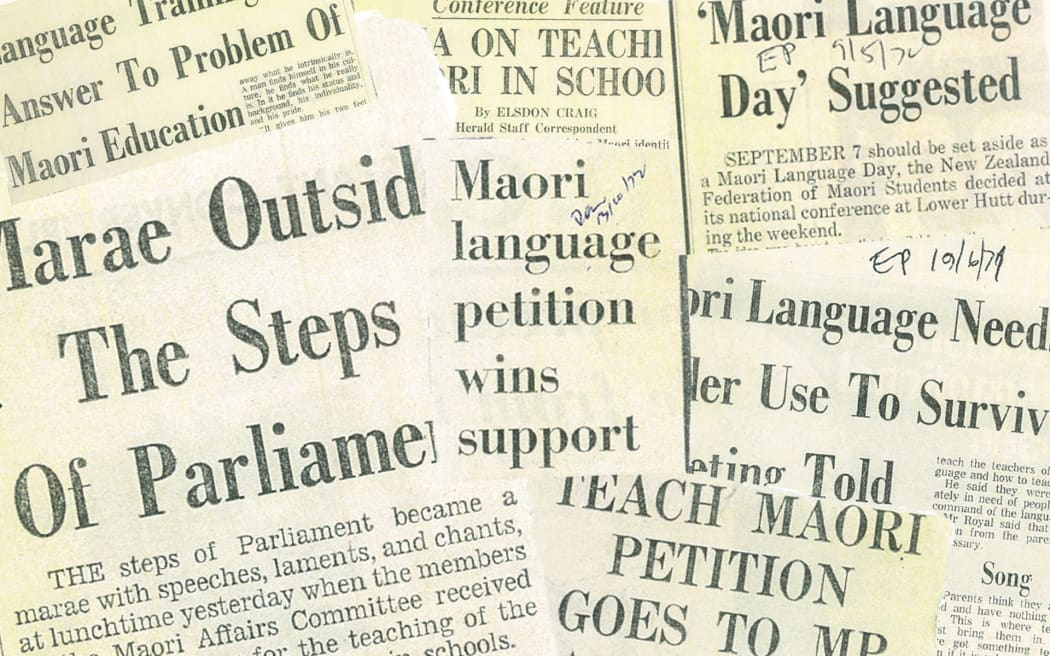
Newspaper clippings from the early 1970s when the Māori Language Petition was presented to Parliament. Photo: SUPPLIED
That moment, half a century ago, is today being remembered as a catalyst for the revival of te reo Māori. A kickstarter for several movements in the 1970s and '80s that knocked New Zealand out of a stupor about the state of race relations.
Another member of Ngā Tamatoa who led a haka as the petition was handed over was Rawiri Paratene, pictured in a sleek jacket with a towering afro, he gave a whaikorero as the petition was handed over.
At the steps of parliament, he also met his future wife. A year later they would have a daughter, who is today known as Green Party co-leader Marama Davidson.
"My nana had literally been beaten - so that's violence in schools to not speak te reo. So she didn't pass it on to my dad," Davidson said in an interview.
"So he was part of a whole generation that started asking questions. 'What the hell is going on? What happened?'."
Te reo Māori in decline
From the earliest days of the colony, mission schools were used to teach English. After Te Tiriti o Waitangi was signed, it took only seven years for the Crown to wield its pen to dismantle the native language.
The Education Ordnance Act 1847 set English as the predominant, normal language of schools. While it wasn't made explicit in legislation, schools started to ban te reo Māori, punishing children who were caught speaking it. In 1867, native schools were created in Māori communities, designed to assimilate through English.
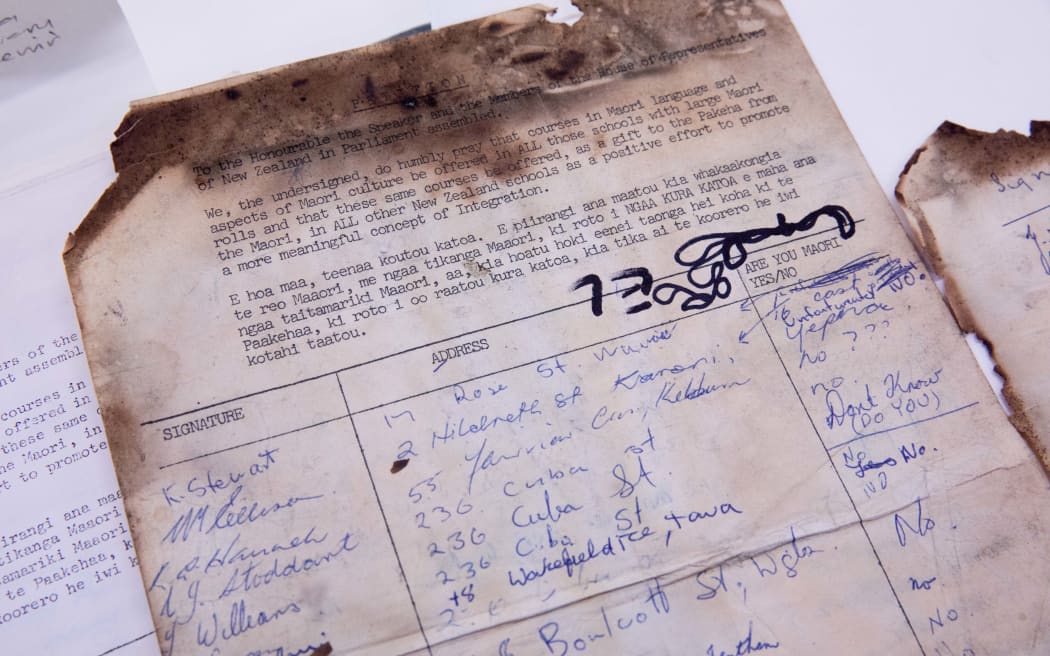
Hana Te Hemara, Ngā Tamatoa and the Te Reo Māori Society spent two years gathering the petition's 33,000 signatures. They door-knocked, gathered signatures in shops, bars and on factory floors. Photo: RNZ / Angus Dreaver
By 1910, it was clear te reo Māori was in decline, even though 90 percent of Māori children could still speak their native tongue. But assimilation is a long-term project, and many whānau, according to reports from the time, were no longer passing the reo to their tamariki.
Official education policies from the 1920s said Māori were more suited to manual labour, and tamariki were often steered away from academic and professional careers.
In 1953, only 26 percent of Māori children could speak their language. That figure was only 5 percent in 1970, when Ngā Tamatoa was formed. Surveys conducted across the country about the use of language in Māori households found that in many areas, there were no children who could speak the language.
One survey conducted at Papawai, the heart of the Kotahitanga in Wairarapa, found there was only one person under the age of 44 who could speak fluently.
"They felt that the language could be lost completely unless something was done to bring it back," the report concluded. "Their parents had been told that knowing English well was better than knowing Māori … Many of these people were now sorry they had never learned Māori and, that because of this they could not teach it to their own children."
Māori ignited to fight for change
Māori language commissioner Rawinia Higgins said by this time there was a new wave of urbanised rangatahi who felt robbed of what they were entitled to.
"They were often university students, first generation urban migration. And they're educated. And they're angry, because they recognise that they've been denied access to their language and their culture," Higgins said.
And they were ready to fight.
It was the 1970s, and fuelled by movements against the Vietnam War and the apartheid regime in South Africa - and New Zealand's support of it - a new wave of Māori activism came to the fore. One of those who joined the new group was Tame Iti.
It seemed inevitable. Raised in Tuhoe country hearing the kōrero of those who survived the Crown assault in pursuit of Rua Kenana, and that of other whānau who were "kidnapped by the state and put on the front line" to fight in World War I, Iti was galvanised in the pursuit of mana motuhake and tino rangatiratanga.
"I had several conversations with some of those people and hearing their stories. Hearing the stories of some of those opposed to the First World War," Iti recalled in an interview on the Wellington waterfront.
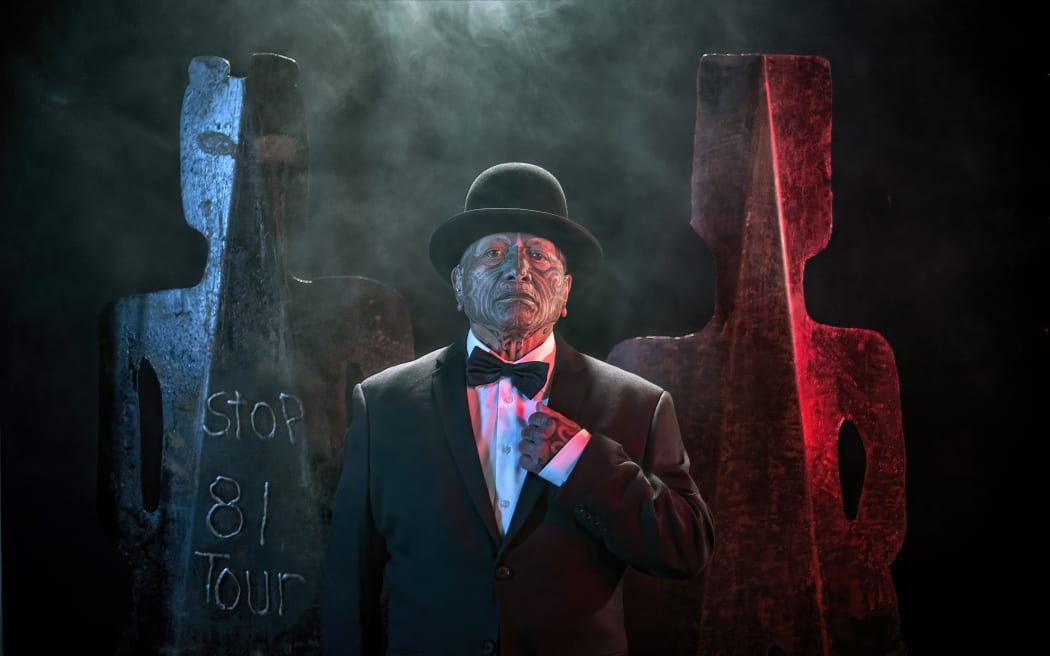
An image from Tame Iti: I Will Not Speak Māori Exhibition. Iti had to write 'I will not speak Māori' as punishment for speaking his native tongue. "Everything was geared up for how to be a Pākehā," he says. Photo: Troy Baker
Fifty years can be transformative. After decades as one of the country's most famed and feared Māori activists, having drawn spite, venom and accusations of everything from radicalism to terrorism, Iti now sits as a top-hatted kaumatua on the waterfront.
A movie star and an arts laureate, with queues forming in Wellington - the centre of government - of people and public servants who want to meet him. Pākeha in puffer jackets jostle to take their picture with him.
They come to see an exhibition on a plaza here: "I will not speak Māori," the phrase Iti had to write again and again on a blackboard as punishment for speaking his native tongue. It's a chapter of our history that motivated him to join Ngā Tamatoa, one he said cannot be forgotten.
"We were struggling with a system that perpetuated violence on our children, forcing them to pick up horse manure and write a hundred lines: I will not speak Māori. Everything was geared up for how to be a Pākehā," Iti said.
It took two years for Hana Te Hemara, Ngā Tamatoa and the Te Reo Māori Society to gather the petition's 33,000 signatures. They door-knocked, gathered signatures in shops, bars and on factory floors. They stood around at railway stations, and people posted in their support after cutting out a form from Māori magazines.
Several iwi, including Ngāti Toa in Porirua, offered their marae as bases for the movement, and prominent churches also threw their support behind the petition.
But for all the support, there was institutional inertia to confront, as well as those who just didn't want to know. Members had dogs set upon them, were followed by the police, or had rocks hurled at them. There were also regular racist tirades.
After all, this was a country that only two decades earlier had segregated changing rooms at some swimming pools, where the returning Māori battalion were not allowed in some pubs. In the 1970s, some shop posters and ads for rental houses sometimes had the phrase, "Māori need not apply."
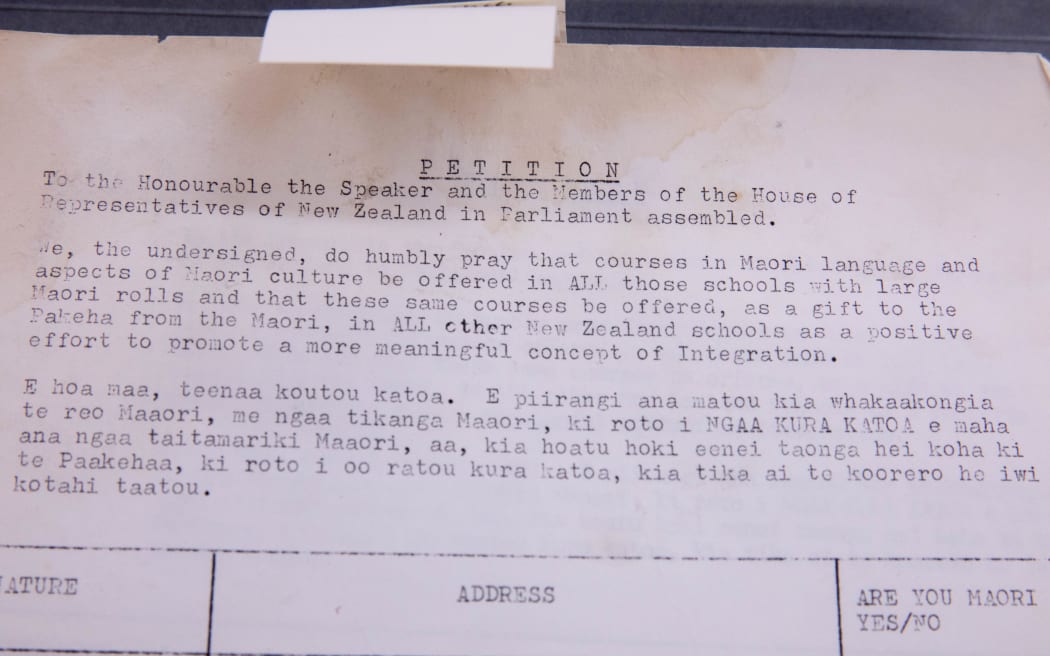
The Māori language petition was delivered to Parliament in 1972 asking for recognition of te reo Maori. Photo: RNZ / Angus Dreaver
It was something Hana Te Hemara's niece Amokura Panoho noticed regularly. In fighting for her people, her aunty sacrificed a great chunk of her life.
"We used to go shopping at Avondale and I used to see how she would be abused by people, they just felt that they could have the comfort to walk up to her in the middle of the street and call her all sorts of names under the sun," Panoho recalled.
"She used to say to me when people go low, you go high. You just raise your head and you walk on. But she didn't want to me to have those kinds of experiences."
The start of something bigger
Fifty years later, the Māori language petition is being seen as a catalyst for the Māori renaissance. A national commemoration will be held at Parliament on Wednesday.
It's being seen as a spark for a decade that would see Whina Cooper's land march, the occupation of Takaparawhau Bastion Point, the launch of the Waitangi Tribunal and other efforts to reclaim Māori reo and rights.
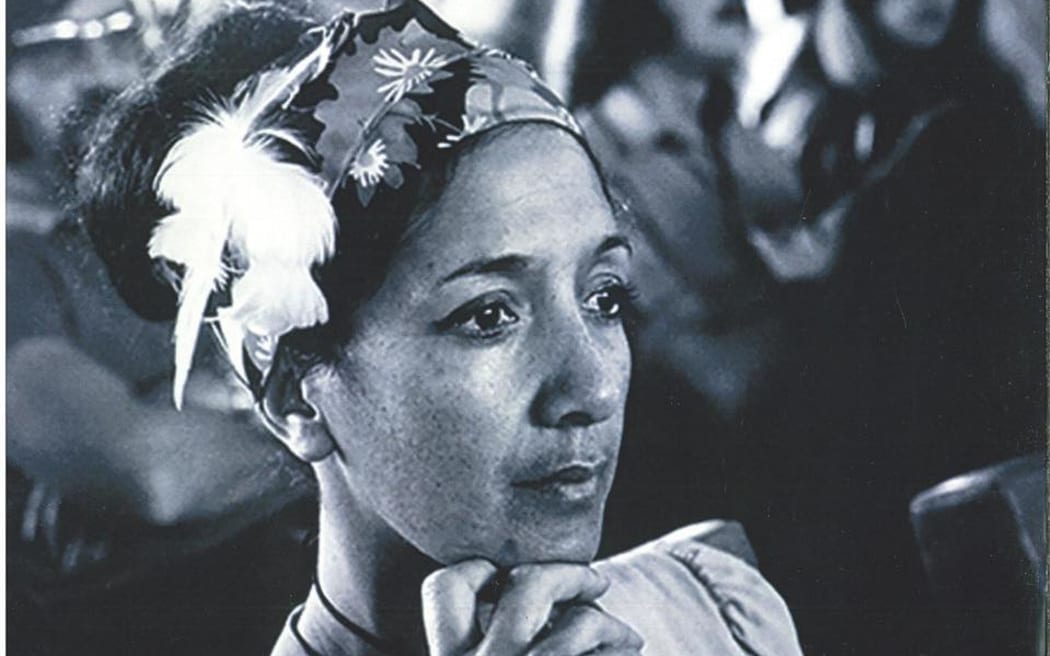
Hana Te Hemara (also known as Hana Jackson), called for the active recognition and teaching of te reo Māori in schools. Photo: SUPPLIED/ I am Hana Facebook page
In the years since, there has been the start of Kohanga Reo, Kura Kaupapa and Whare Wānanga. Māori broadcasting and film-making has reflected the reo, and Te Matatini have highlighted kapa haka. There's even been shifts in government and mainstream media.
Rawinia Higgins said much of that can be drawn to the efforts of people like Hana Te Hemara, and other groups of rangatahi who stood up.
"The things we take for granted today came from, often from protestation and not just because someone in the government said, 'hey this is a good idea' but actually through some hard sweat and tears from people who were passionate about te reo Māori," Higgins said.
Hana Te Hemara died in 1999, aged 59, and Amokura Panoho said her aunty never achieved the dream of reclaiming her reo.
But the dream is lived instead through her mokopuna, who all came through kura kaupapa and are now fluent. The whānau has organised a large exhibition in Taranaki to celebrate her life and legacy.
Today, 30 percent of New Zealanders can speak some reo Māori, with a quarter of Māori now able to speak it as a first language.
But Whaimutu Dewes, who was at parliament 50 years ago, warns it could still all be lost.
"I am greatly encouraged by what I see and what I hear. But I don't think we've passed a tipping point within 50 years of seeing the gains we have made, as a country, recede."


